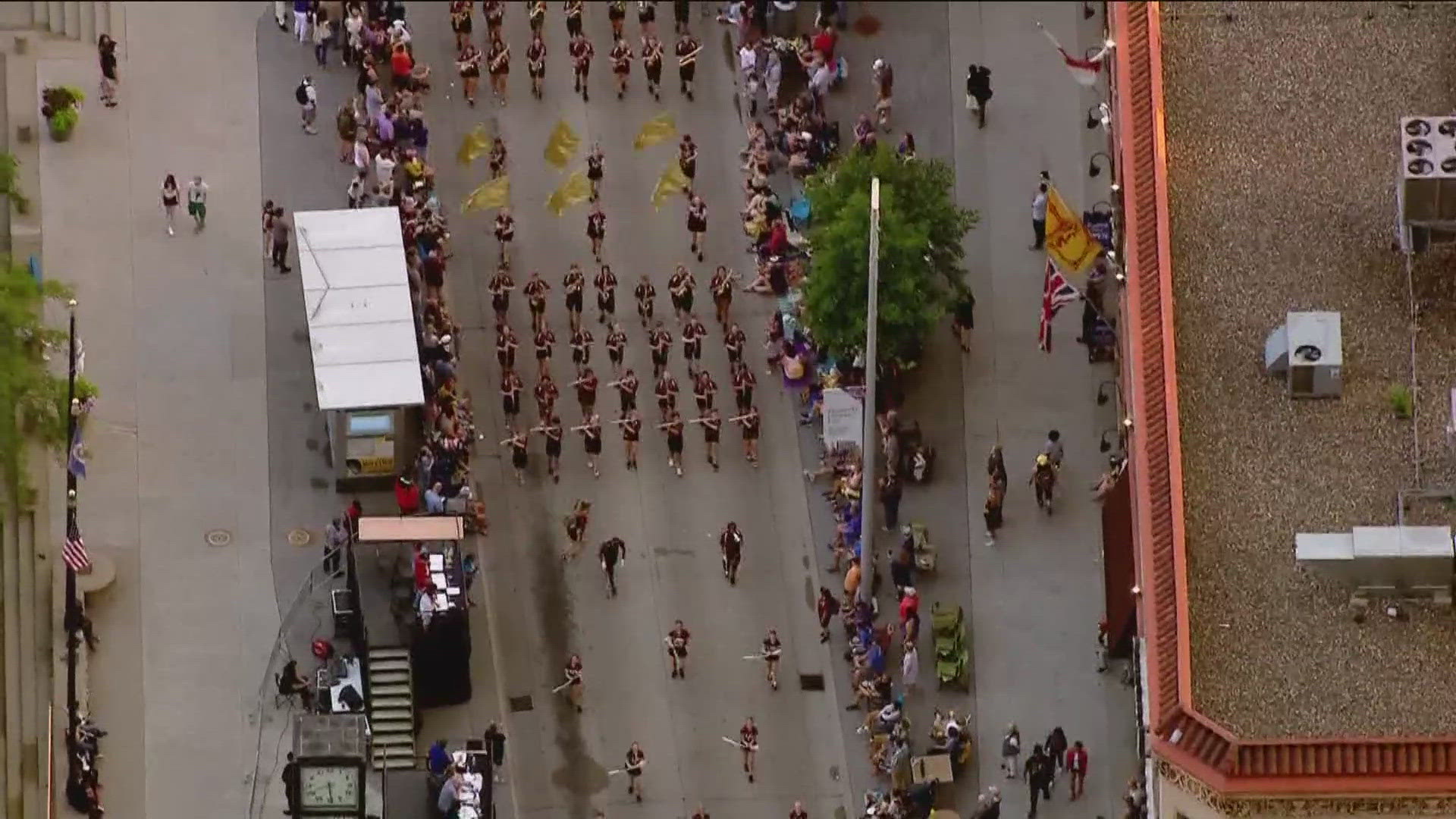MINNEAPOLIS — The City of Minneapolis has held Aquatennial celebrations featuring parades, pageants and more since 1940.
The annual festival full of fun used to be known as the “10 best days of summer” and always takes place in the third week of July.
According to historian Peter Rachleff, that timing is no coincidence.
"The unity that the Aquatennial was celebrating, was a unity that tried to hide the kind of conflict that had gone on in Bloody Friday," said Rachleff.
He was joined by a crowd of dozens who had converged in the north loop neighborhood of Minneapolis to commemorate the 1934 Trucker's strike, more specifically, the events that occurred on July 20 of that year.
Tens of thousands of truckers were striking for higher wages and more rights on that day more than 90 years ago. Pressure had been mounting for weeks and between the teamsters and a board of business owners who often deployed the police to break up the strikes.
"Sixty-seven people were shot and two died," said Rachleff about the teamsters.
Governor Floyd Olson declared martial law and the union declared victory after a settlement was reached weeks later.
But the possible connection between Bloody Friday and the Aquatennial isn’t on the record.
The CEO and President of the Minneapolis Downtown Council, Adam Duininck, acknowledges the possible connection.
“Given the timelines (of the strike and the celebration) it's possible that there's a connection," said Duininck.
Despite the controversial origins of the Aquatennial, Duininck argues that there's room for both celebrating the victories of the union and the unity of the city.
"The unity around celebrating the city should involve all of us. We want a downtown that reflects everybody. From the people that work in the tall towers to everybody that works to clean them. It takes all of us. We should bring those communities together," said Duininck.
Minneapolis artist Keith Christensen is working on behalf of the 1934 committee to ensure the memory of Bloody Friday makes it to the next generation
“It's not about a dead history, it's about how to use the history to go forward and learn a lesson," said Christensen.
He and the committee have created a series of events to mark the 90th anniversary of Bloody Friday, including an art gallery in the downtown Minneapolis Library.
“It helps people to go forward, to know there's a legacy of caring about each other to make the world better," said Christensen.
Click here to see more information about the events the 1934 committee has created to commemorate the 90th anniversary of Bloody Friday.

